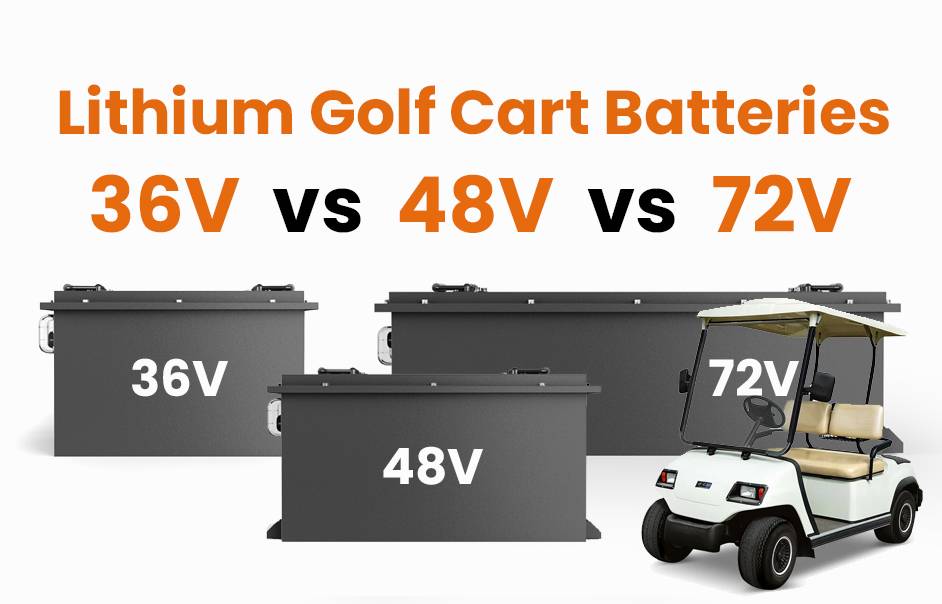
Blog
Are LiFePO4 Golf Cart Batteries Safe and Stable for Long-Term Use?

LiFePO4 (lithium iron phosphate) batteries prioritize safety through inherent chemical stability. Unlike traditional lithium-ion chemistries, they resist thermal runaway, operate efficiently in temperatures from -4°F to 140°F, and feature built-in Battery Management Systems (BMS) to prevent overcharging, short circuits, and voltage spikes. These traits make them ideal for golf carts, where vibration and prolonged use demand reliability.
Advanced BMS technology continuously monitors individual cell voltages and temperatures, automatically disconnecting power during abnormalities. This system prevents scenarios like over-discharge during long uphill drives or excessive current draws when carrying heavy loads. Golf cart manufacturers also reinforce battery housings with ABS plastic to absorb impacts from rough terrain, while flame-retardant separators between cells add an extra layer of protection against internal short circuits.
Does Temperature Affect LiFePO4 Battery Performance in Golf Carts?
LiFePO4 batteries operate optimally between -4°F and 140°F, with minimal capacity loss at extremes. At -22°F, they retain 70% capacity, while lead-acid batteries drop to 50%. Built-in BMS adjusts charging rates in real-time to prevent overheating, ensuring stable power delivery during summer rounds or winter storage.
Temperature impacts are further mitigated through proprietary electrode designs. For example, some models use carbon-coated current collectors to maintain ion conductivity in cold weather. The table below shows performance comparisons across temperature ranges:
| Temperature (°F) | LiFePO4 Capacity | Lead-Acid Capacity |
|---|---|---|
| 140 | 95% | 75% |
| 32 | 85% | 60% |
| -4 | 80% | 40% |
How Do LiFePO4 Batteries Compare to Lead-Acid in Stability?
LiFePO4 batteries maintain consistent voltage (3.2V per cell) during discharge, unlike lead-acid’s voltage sag. This ensures steady power for hills and reduces motor strain. They also charge 4x faster, with no memory effect, and sustain 2,000+ cycles vs. lead-acid’s 500 cycles. Weight savings (70% lighter) further improve cart stability and tire wear.
The reduced weight distribution lowers the golf cart’s center of gravity, minimizing rollover risks on slopes. Unlike lead-acid batteries that release hydrogen gas during charging, LiFePO4 systems are completely sealed, eliminating corrosion risks to electrical components. Their flat discharge curve also means lights and accessories maintain consistent brightness even when battery capacity drops below 20%.
- Q: Can I replace lead-acid with LiFePO4 without modifying my golf cart?
- Yes, most LiFePO4 batteries come in drop-in sizes with compatible voltage. Ensure your charger supports LiFePO4 profiles.
- Q: Do LiFePO4 batteries lose charge when unused?
- They lose 1-2% charge monthly vs. lead-acid’s 5-10%. Store at 50% charge for longevity.
- Q: Are LiFePO4 batteries recyclable?
- Yes, 98% of materials are recyclable. Many brands offer buyback programs.
“LiFePO4 is revolutionizing golf cart safety,” says a battery engineer at Dakota Lithium. “Their zero-maintenance design and 10-year lifespan reduce course downtime. We’ve seen a 40% drop in battery-related incidents since courses adopted LiFePO4. Future models will integrate AI-driven BMS to predict terrain demands and optimize discharge curves in real time.”
Know more:
How Do LiFePO4 Batteries Enhance Golf Cart Performance with High Energy Density?
How Do LiFePO4 Batteries Reduce Golf Cart Ownership Costs?
How Are LiFePO4 Golf Cart Batteries Transforming Sustainability in Recreation?
How Do LiFePO4 Batteries Achieve Fast Charging with Minimal Downtime?
Why Are LiFePO4 Batteries Considered Low Maintenance?
Are LiFePO4 Golf Cart Batteries Safe and Stable for Long-Term Use?





